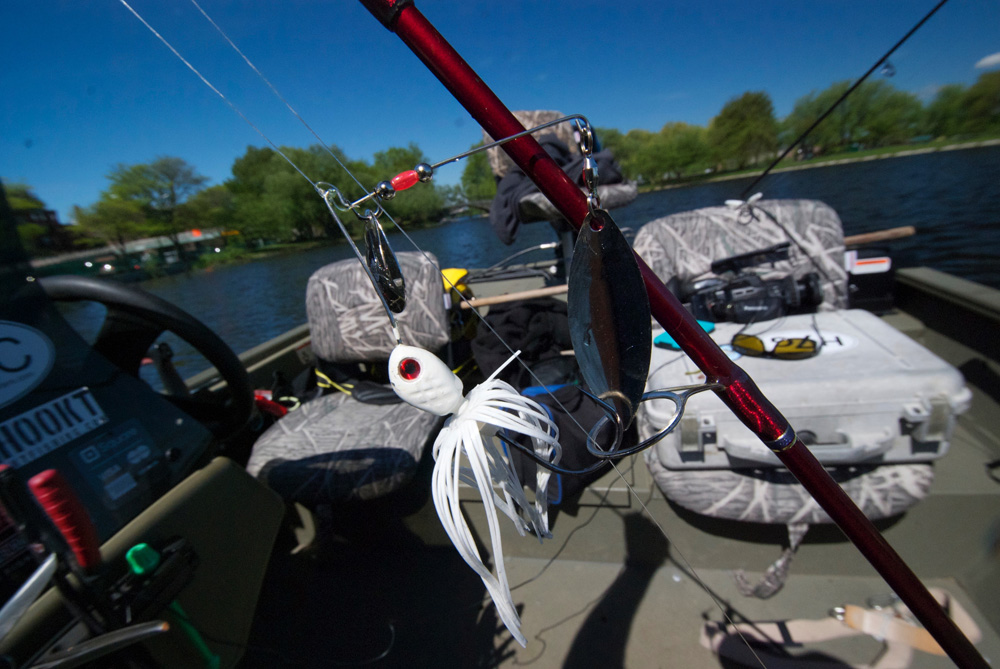

Given the Charles River’s polluted history, many people are surprised to learn that the fishing for largemouth and smallmouth bass can be sensational. Fact is, the Charles has been cleaned up considerably over the past 50 years, and while the sediment still contains high levels of PCBs, the water itself supports a wide variety of aquatic life.

A few years back I fished the lower Charles with Capt. Greg Miner, whom I met at the Community Rowing Center in Brighton—home to the only public launch ramp on the lower Charles. This ramp can be very crowded, and the parking lot fills quickly on weekends.
As Greg and I made our way downriver, we passed dozens of rowers, being careful not to disturb them with our wake. Powerboaters are limited to headway speed only on this stretch of the river, so take it slow or you’ll get an earful from the rowers.
Once below the Boston University Bridge, Miner throttled up and we headed for the Esplanade Lagoon system, created around the end of the 19thCentury by renowned landscape architect Frederick Law Olmsted. The series of shallow, manmade ponds and channels run parallel to Storrow Drive and the Back Bay, and to fish them in a small boat or kayak as rush-hour traffic roars past and joggers cast curious stares is pretty surreal. The lagoons also provide ideal habitat for largemouth bass, which lurk among the aquatic vegetation.
With an average depth of three feet, the lagoons are best fished in the early season (May to mid-June), before the weeds grow too thick and the water gets too warm for the bass. The average depth is three feet, so shallow-draft boats and paddle craft are needed to fish here.
During the early season, Miner often throws soft-plastic Stick Tail worms rigged Texas-style, as well as traditional spinnerbaits. Both work well in weedy waters, as do Senko “wacky worms.”
Later in the season, Miner concentrates on the deeper (10-20 feet) channel drop-offs and shoreline riprap in the open river, as well as around bridge abutments. These areas can be worked with shad-style lipped plugs and weighted soft-plastics. Shadow lines and the overhanging branches of shoreline trees will also hold bass, as well as pike and pickerel, father upstream.
Miner and I continued moving through the lagoons, carefully working each foot of shoreline amid a cacophony of city sounds. When we reached the southernmost lagoon, Miner steered us through one of the cuts in the protective berm that shelters the Boston Community Boating center. He explained that the outer drop-off and submerged riprap along the berm often hold some nice smallmouth bass, as well as the occasional striped bass.
As we made our way back through the lagoons, the bite seemed to improve. We landed several more small bass before Miner hooked a three-pound largemouth that ate a white spinnerbait.
While most of the bass in the Charles weigh lesss than two pounds, the lower river does produce some lunkers over five pounds. However, the real thrill is being able to fish a rejuvenated river in the shadow of New England’s largest city.
